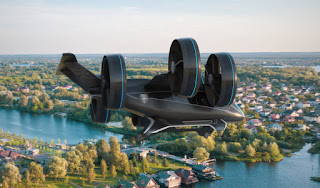--AD--
Uber has chosen Melbourne city to join the list of 3 locations for its flying taxi trials which also has Dallas and Los Angeles on the list.
The third location was supposed to be Dubai, but negotiations wasn't positive and this prompted the company to look for alternative for trials outside the US. Uber considered Rio de Janeiro, São Paulo, Paris, Mumbai, Delhi, Bangalore, Tokyo and Sydney. In the end, Melbourne won.
Susan Anderson, Uber's Regional General Manager for Australia, New Zealand and North Asia, told Reuters that it's because the Australian government "adopted a forward-looking approach to ridesharing and future transport technology." Melbourne, in particular, has a "unique demographic and geospatial factors, and culture of innovation and technology" that make it perfect for the trials.
The ride-hailing service plans to start testing UberAir's electric vertical-take-off-and-landing vehicles in 2020 (that is a year from now); three years before the service's expected launch. The test flights in Melbourne will take passengers from one of the Westfield shopping centers to the city's main international airport. That's a 12-mile journey that usually takes 25 minutes or so by car, but with a flying taxi, it'll only take 10 minutes.
Recommended:
How to use Uber App
Uber now tracks you during and after your ride
Passengers will be able to book flights through the Uber app like any other ride for prices comparable to UberX's, though they have to be cool with making their way to and from landing pads called "Skyports."
Uber is currently working with a number of companies to design its flying vehicles. It also working with NASA to create an air traffic control system to manage its flying taxi fleet.
The third location was supposed to be Dubai, but negotiations wasn't positive and this prompted the company to look for alternative for trials outside the US. Uber considered Rio de Janeiro, São Paulo, Paris, Mumbai, Delhi, Bangalore, Tokyo and Sydney. In the end, Melbourne won.
 |
| Uber Air |
Susan Anderson, Uber's Regional General Manager for Australia, New Zealand and North Asia, told Reuters that it's because the Australian government "adopted a forward-looking approach to ridesharing and future transport technology." Melbourne, in particular, has a "unique demographic and geospatial factors, and culture of innovation and technology" that make it perfect for the trials.
The ride-hailing service plans to start testing UberAir's electric vertical-take-off-and-landing vehicles in 2020 (that is a year from now); three years before the service's expected launch. The test flights in Melbourne will take passengers from one of the Westfield shopping centers to the city's main international airport. That's a 12-mile journey that usually takes 25 minutes or so by car, but with a flying taxi, it'll only take 10 minutes.
Recommended:
How to use Uber App
Uber now tracks you during and after your ride
Passengers will be able to book flights through the Uber app like any other ride for prices comparable to UberX's, though they have to be cool with making their way to and from landing pads called "Skyports."
Uber is currently working with a number of companies to design its flying vehicles. It also working with NASA to create an air traffic control system to manage its flying taxi fleet.

Comments
Post a Comment
Important - If you ask a question make sure you tick the "Notify Me" box below the comment form to be notified of follow up comments and replies.